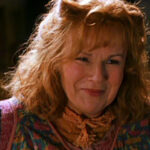One of my favorite movies of all time is “The Sound of Music.” I was never really a big Julie Andrews fan before that, but she won me over in the role of Maria. I was also intrigued because the story was based in truth, at least for the most part. As is always the case with Hollywood, they took a few liberties along the way.
The true story of the Von Trapp family is even more amazing than the glamorized version put out by Tinsel Town. Anyone who ever had the pleasure of seeing one the few television interviews with Maria Von Trapp quickly learns that she was much more than a cute, sweet, albeit trouble-making girl. She was amazingly strong willed, highly intelligent, and a real force of nature.
Maria Kutschera was herself Austrian born, but she was orphaned early in life. An abusive relative who was a practicing atheist as well as a socialist raised her in his beliefs. Therefore, her faith in God did not come to her until later on in life. It was while she attended a teacher’s college in Vienna that Maria wandered into a Palm Sunday service believing it to be a musical concert.
Not wanting to make a spectacle of herself or disrupt the service, Maria sat in a pew waiting for the time to pass so that she could discreetly remove herself. But the words of the priest began to get through to her. His passion and his faith touched something deep within the young girl. Not long afterwards, she converted to Catholicism.
Soon after graduation from college Maria decided to enter the Benedictine Abbey of Nonnberg in Salzburg. But she struggled with the Abbey’s strict rules. Although her belief in God was now solid, she had problems with the discipline of her chosen order and wondered if she had made the wrong decision. These doubts, along with her inability to get the fresh air and exercise that she so longed for, took a toll on the young novice’s health.
It would seem that fate stepped in to put things right for Maria when in 1926, Georg Von Trapp requested that the Abbey provide a teacher for his daughter, also named Maria, who was recovering from scarlet fever. The elder Maria was chosen for the job due in part for her abilities as a teacher, but also as a means to test the novice’s commitment to the church. It was also believed that her health would improve once she left the damp Abbey.
Initially, Maria was only supposed to stay with the Von Trapp family for about 10 months. At the end of that time, she was scheduled to take her final church vows. But her life took a much different turn. Georg Von Trapp immediately fell in love with the feisty novice and realized that she brought a highly needed breath of fresh air into his family.
Although Maria was never truly hired as a governess to care for the Von Trapp children, she quickly grew close to them. In her autobiography she admitted “I fell in love with those children!” She was not, however, in love with Georg when she agreed to marry him in 1927. She simply could not imagine her life without the children in it. A side bonus was that she came to love her husband more deeply than she ever felt possible.
Maria and Georg Von Trapp had three children of their own; bringing the size of their family to 10 children in total. Rosemarie was born slightly more than one year after their marriage in 1928. Eleanor was born in 1931 and Johannes eight years later in 1939.
The movie did accurately portray the Von Trapp’s love of music. Maria enjoyed singing with her step-children and believed it important that they get plenty of exercise through outdoor activities. Unlike the movie, however, Georg Von Trapp often joined in the fun since he was also a gentle, loving soul who deeply cared for his children and his wife. Also, unlike the movie, the family had always enjoyed music, although it is true that their new mother taught them how to sing madrigals.
Von Trapp’s fortune was not confiscated by the Nazis as alluded to in the movie. He actually lost it when he moved his money from a safely held London bank to Austria in order to support a friend in banking. Unfortunately, shortly after he transferred the money, the bank failed and the Von Trapps lost everything some seven years into their marriage.
Having always been a frugal person, Maria had no problem regulating the budget. She tightened all the belts of her family. Most of the servants were let go and the family began taking in boarders to make extra cash. This when the idea of turning the family’s love of singing into something that could support them came to fruition. Although Georg was reluctant to have his family perform in public, he eventually gave in. As was depicted in the movie, the family did actually win first place in the Salzburg Music Festival in 1936.
In 1938, the Nazis annexed Austria. As shown in the film, Georg blatantly refused to fly the Nazi flag over his house and declined a naval command. He also declined an invitation for his family to perform at Adolph Hitler’s birthday party. All of these actions put both the commander and his family on thin ice.
The decision to turn down everything that the Nazi regime offered them – – fame, a new fortune, and supposed security – – and leave behind everything they knew was not an easy one for the family to make. However, in the end, everyone agreed that they couldn’t give up their principles and left the only home they had ever known.
They did not, however, travel over the Swiss Alps as depicted in “The Sound of Music.” If they had, they would have, in fact, ended up very close to Hitler’s winter cottage. Although not as dramatic, their exit was still dangerous. In June of 1939, the family traveled to Italy to perform. They never returned to Austria despite demands by the Nazi regime that they do so. From Italy the Von Trapps moved to London where they hopped on a ship going to America to perform in a concert in Pennsylvania.
When their visa’s expired, the family requested asylum in the U.S., which was eventually granted. Most of the family – – with the exception of Georg – – subsequently applied for citizenship or were naturalized through military service. The family patriarch could never bring himself to give up his Austrian citizenship, even though he loved his new country dearly.
The Von Trapp family continued to tour and make money by singing for many years. They also ran a music camp on a Vermont farm that they purchased in the 1940’s. It was turned into a lodge and opened to guests in 1950. Maria ran the lodge for many years. It is still active and serves as one of the concert sites for the Vermont Mozart Festival.
The family Von Trapp family boasted a doctor (Rupert), a kindergarten teacher (Agathe), a missionary (Maria, the younger), a farmer (Werner), and a music teacher (Hedwig). Johannes eventually married and returned to his home country of Austria while Martina married and died in childbirth. Eleanor and Rosemarie remained in Vermont.
In 1948, George Von Trapp died and was buried on his family’s property. Maria died in 1987 and was laid to rest next to her husband and stepdaughter Martina. And that, as they say, is “the rest of the story!”




